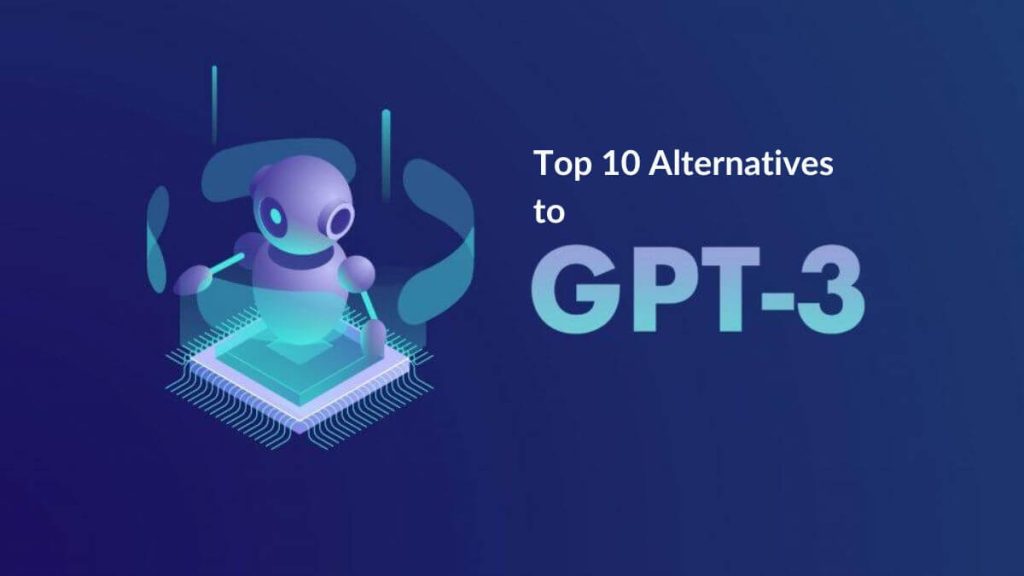ChatGPT has been making waves in the tech world, earning itself the ‘Google killer’ moniker. Trained on GPT-3, an impressive large language model (LLM) developed by OpenAI, ChatGPT boasts a staggering 175 billion parameters, cementing its position as one of the most formidable language models to date. Its capabilities extend far beyond mere text generation, encompassing tasks ranging from translation to code writing and summarization.
However, while GPT-3 has undoubtedly captured the spotlight, it’s important to recognize that it’s not the only player in the game. Competitors such as DeepMind, Google, Meta, and others have also entered the arena with their formidable language models, some boasting parameters exceeding GPT-3 by tenfold.
Let’s delve into some of the top alternatives to GPT-3, each offering its unique strengths and capabilities:
BLOOM
Developed collaboratively by over 1,000 AI researchers, Bloom stands out as an open-source multilingual language model hailed as the prime alternative to GPT-3. With a whopping 176 billion parameters, Bloom surpasses GPT-3 in scale and complexity. Its training process was a monumental endeavor, requiring the collective power of 384 graphics cards, each equipped with over 80 gigabytes of memory. Bloom’s versatility shines through its training in 46 languages and 13 programming languages, catering to a diverse array of linguistic and technical needs.
GLaM
Crafted by the minds at Google, GLaM represents a fusion of expertise in the form of a mixture of experts (MoE) model. Boasting an impressive 1.2 trillion parameters distributed across 64 experts per MoE layer, GLaM is a behemoth in the realm of language models. During inference, the model selectively activates 97 billion parameters per token prediction, showcasing a remarkable balance of power and efficiency.
Gopher
DeepMind’s contribution to the field comes from Gopher, a specialized model designed to excel in answering scientific and humanities-based questions. With 280 billion parameters under its belt, Gopher punches above its weight class, rivaling models significantly larger in scale. Its finesse in logical reasoning makes it a strong contender in the language processing field.
Megatron-Turing NLG
A collaborative effort between NVIDIA and Microsoft, Megatron-Turing NLG emerges as one of the largest language models to date, boasting a staggering 530 billion parameters. Trained on the formidable NVIDIA DGX SuperPOD-based Selene supercomputer, Megatron-Turing NLG stands as a pinnacle of computational prowess. Its 105-layer, transformer-based architecture sets new standards for accuracy across zero-, one-, and few-shot settings.
Chinchilla
DeepMind’s Chinchilla, a compute-optimized model with 70 billion parameters, utilizes four times the usual data volume. Despite fewer parameters, Chinchilla outperforms larger models in several tasks, highlighting the importance of data scale in performance.
Also read | What is temporary chat on ChatGPT and How to use it
PaLM
Google’s PaLM boasts 540 billion parameters, utilizing a dense decoder-only transformer architecture trained with the innovative Pathways system. Its performance speaks for itself, outshining competitors across a myriad of NLP tasks in English.
BERT
Google’s BERT represents a neural network-based approach to NLP pre-training, offering two variants: Bert Base and Bert Large. With 110 million and 340 million trainable parameters respectively, BERT sets the bar high for bidirectional encoder representations in the transformer era.
LaMDA
Google’s LaMDA revolutionizes the landscape of natural language processing with its 137 billion parameters, fine-tuned through extensive pre-training on a vast dataset of 1.5 trillion words. LaMDA’s versatility extends to zero-shot learning, program synthesis, and beyond, marking a significant leap forward in language model capabilities.
OPT
Meta’s OPT, with 175 billion parameters, exemplifies community-driven innovation, trained on publicly available datasets. Despite its formidable scale, OPT maintains accessibility through its noncommercial license, fostering collaboration and research in the NLP community.
AlexaTM
Amazon enters the fray with AlexaTM, a formidable language model boasting 20 billion parameters. AlexaTM, though modest in scale, excels in few-shot learning and machine translation using its encoder-decoder architecture.
The rise of ChatGPT and its competitors heralds a new era of innovation and possibility in natural language processing. Innovative models push limits, promising thrilling AI advancements, and transforming communication and comprehension for an exhilarating future of breakthroughs.

